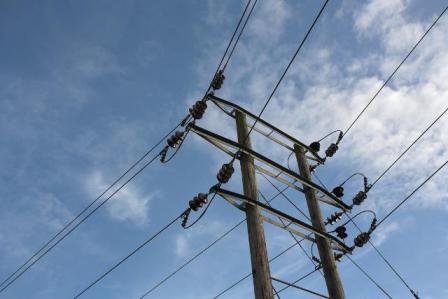
UNDP predicts ‘Fully Green’ Sri Lanka by 2050

A report has been issued by the United Nations Development Programme (UNDP) and the Asian Development Bank (ADB) forecasting a 100 percent green energy future for Sri Lanka by 2050.
According to Power Engineering International (PEI), the financial analyst has predicted that the country’s electricity generation capacity will increase from 3.7 GW to 34 GW over the coming decades. Accordingly, it is expected 15 GW is to be generated by wind energy harnessing power plants, 16 GW by solar power plants and the remainder will be generated from hydro-electricity and biomass plants paving the way for a ‘fully green’ Sri Lanka by 2050.
Researches of the UNDP have encouraged this initiative to reduce Sri Lanka’s reliance on fossil fuels. According to PEI the transition from fossil fuels to clean energy generation will reduce the country’s fuel import cost by approximately 18 billion USD.
Sri Lanka boldly pledged to strive towards clean energy when the nation adopted the ambitious voluntary goal at the UN climate change conference in Marrakesh in 2016 after becoming a signatory to the Paris Agreement along with 42 other countries.
The Director of ADB’s South Asia Energy Division Priyantha Wijayatunga stated that ADB would continue to enhance Sri Lanka’s transition to Green energy. He stated that proposals of a rooftop solar programme and large scale wind power projects illustrate the commit shown by ADB towards Sri Lanka. It was further stated that the report formulated is a shining global example on how to decentralize the governance of clean energy services.
Source – 22/08/2017, Ada Derana, See more at – http://www.adaderana.lk/news/42635/undp-predicts-fully-green-sri-lanka-by-2050-

Fire at Batticaloa garbage dump doused

The fire that erupted at the Thirupparenthurai garbage dump in Batticlaoa has already been brought under control.
A fire erupted early this morning at the Thirupparenthurai garbage dump. Our correspondent reported that as result a chaotic situation surfaced among the people of the area.
It is reported that the fire has been doused by the Batticaloa Municipal Council Fire Brigade Unit.
Source – 22/2017.ITN, See more at – https://www.itnnews.lk/local-news/fire-at-batticaloa-garbage-dump-doused/

Sri Lanka to meet its current and future electricity demand by use of renewable energy by 2050

Sri Lanka would be able to meet its current and future electricity demand by use of renewable energy by 2050, according to a joint study by the UN Development Programme and Asian Development Bank, the Public Finance Report International reported.
The report, titled Assessment of Sri Lanka’s Power Sector—100 percent Electricity Generation through Renewable Energy by 2050, noted that by then Sri Lanka’s installed electricity generation capacity needs would increase from the current 3,700mw to about 34,000mw.
Of this, 15,000mw would be wind energy and about 16,000mw solar. The remainder is expected to be met from hydroelectric and biomass power plants.
The study also identified a need to ensure stability of the electricity grid by introducing electricity storage capable of the instantaneous provision of 3,600mw and energy storage capacity of 15,000mw hours.
A long-term switch from fossil to renewable fuels would reduce Sri Lanka’s fuel import bill by about $18bn cumulatively but found the country would need investment of $50bn.
Priyantha Wijayatunga, director in the ADB’s South Asia energy division, said: “ADB has expressed its continuous support to low-carbon development of Sri Lanka.
“Recent proposals including a rooftop solar programme and a large-scale wind power project demonstrate ADB’s commitment in this regard. This assessment report can serve as a comprehensive example for future utilities globally on how decentralised clean energy services can be governed.”
Source – 22/08/2017, Tomes Online, See more at – http://www.sundaytimes.lk/article/1029967/sri-lanka-to-meet-its-current-and-future-electricity-demand-by-use-of-renewable-energy-by-2050

Cost of natural disasters and climate change taking a heavy toll on Sri Lanka

This year, yet again, flooding caused by heavy monsoon rains came and receded. Meanwhile, this year alone, more than one million people have been hard hit by the worst drought in 40 years.
The following report was first published on the World Bank Blog
The media, with few exceptions, have moved on to other topics and a sense of calm pervades.
We are in the eye of the storm — that misleading lull before mother nature unleashes her fury once again.
In Sri Lanka alone, costs from natural disasters, losses from damage to housing, infrastructure, agriculture, and from relief are estimated at LKR 50 billion (approx. USD 327 million). The highest annual expected losses are from floods (LKR 32 billion), cyclones or high winds (LKR 11 billion), droughts (LKR 5.2 billion) and landslides (LKR 1.8 billion). This is equivalent to 0.4 percent of GDP or 2.1 percent of government expenditure. (#SLDU2017). Floods and landslides in May 2016 caused damages amounting to US$572 million.
These numbers do not paint the full picture of impact for those most affected, who lost loved ones, irreplaceable belongings, or livestock and more so for those who are back to square one on the socio-economic ladder.
Even more alarming, these numbers are likely to rise as droughts and floods triggered by climate change will become more frequent and severe. And the brief respite in between will only get shorter, leaving less time to prepare for the hard days to come.
Therefore, better planning is even more necessary. Sri Lanka, like many other countries has started to invest in data that highlights areas at risk, and early warning systems to ensure that people move to safer locations with speed and effect.
Experience demonstrates that the eye of the storm is the time to look to the future, ready up citizens and institutions in case of extreme weather.
Now is the time to double down on preparing national plans to respond to disasters and build resilience.
It’s the time to test our systems and get all citizens familiar with emergency drills. But, more importantly, we need to build back better and stronger. In drought-affected areas, we can’t wait for the rains and revert to the same old farming practices. It’s time to innovate and stock up on critical supplies and be prepared when a disaster hits.
It’s the time to plan for better shelters that are safe and where people can store their hard-earned possessions.
Mobilizing and empowering communities is essential. But to do this, we must know who is vulnerable – and whether they should stay or move. Saving lives is first priority, no doubt. Second, we should also have the necessary systems and equipment to respond with speed and effect in times of disasters. Third, a plan must be in place to help affected families without much delay.
Fortunately, many ongoing initiatives aim to do just that.
Modeling of river basins under the Climate Resilience Improvement Project (CRIP) will help us better understand water flows; improved information access and analysis by the Department of Meteorology aim to provide 2-3 days warning before a weather-related disaster strikes; NGOs, government and development partners are beefing up their outreach efforts to help alert and prepare communities; and building back better after a disaster is leading to sturdier and more resilient infrastructure.
But more is needed. Investments required over the next 5-10 years for risk mitigation will amount to several billions of dollars. The country needs to keep a close watch on the impact of disasters on its finances and budget. It needs to strike a fair balance between budget support needed for disaster management programs and budget reserves which can be accessed with speed and effect in times of disasters. It also needs to build in insurance mechanisms. A long-term approach is needed while being prepared for short term impacts.
So, when you are in the eye of the storm, it’s time to prepare!
Source – 22/08/2017, Times Online, See more at – http://www.sundaytimes.lk/article/1030020/costs-from-natural-disasters-and-climate-change-taking-a-heavy-toll-on-sri-lanka



